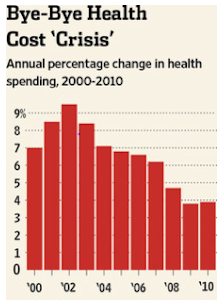Excellent story in the Times-Dispatch today. Too bad it’s buried on the business page. It should have been squeezed onto the front page, or at least in the A section, to share space with the wall-to-wall coverage of abortion, gun bills and the rest of the Culture War effluvia that so mesmerizes the reporters and editors of Virginia’s newspapers.
The underplayed article focuses on a topic that affects everyone, rich and poor, young and old: the lack of price transparency in health care. Tammie Smith illustrates the point by recounting the story of Lisa Ownby, a Williamsurg mother of two boys who suffer from a condition in which their tooth enamel easily erodes. Dentists recommended complex oral surgery for the two. But when Ownby asked how much the procedures would cost, no one could tell her.
“I was told I could not be given a dollar amount of what I’d owe,” she said. Figuring that the procedures might cost her a $1,000 copay, she went ahead and had the procedures done. She was floored to find that the charges amounted to nearly $40,000 before health insurance-negotiated discounts. The final charge was $17,000 paid by the insurer and $3,000 out of pocket.
“If I had known it would cost $40,000, I would have said, ‘No.’ They were baby teeth,” Ownby said. “It’s not even like they were saving permanent teeth. I could have chosen to say, ‘I couldn’t afford this.’ I wasn’t given that option.”
This story highlights the greatest single failing of the American health care system today: the total lack of price transparency. It is ludicrous to describe what we have today as a “market-based” health care system, and an intellectual fraud to attribute the inadequacies of the system to “market failure.” When there are no prices, there is no market economy!
There are two basic approaches to fixing the problem. One approach, adopted by the U.S. and the economically advanced democracies, is to move toward a government-dominated, command-and-control health care economy. The other, attempted only in isolated pockets such as cosmetic medicine, Lasik surgery and medical tourism, is to move toward a consumer-driven health care system in which prices play a major role in decision making.
Virginia has made some feeble gestures in the direction of increasing price transparency, supporting the activities of the private, not-for-profit Virginia Health Information. VHI has a contract to collect and report state health data, including health care prices on some 30 common medical procedures such as abdominal ultrasound and hip replacement. But VHI lacks the resources to post data for thousands of other medical procedures that Virginians encounter.
However, HB 343 submitted by my representative, Del. John O’Bannon, R-Henrico, and SB 135, co-sponsored by Sen. Toddy Puller, D-Mount Vernon, and Sen. Dick Saslaw, D-Springfield, would establish a Virgina All Payer Claims Database system. The purpose would be to: “facilitate data-driven, evidence-based improvements in access, quality, and cost of health care through understanding of health care expenditure patterns and operation and performance of the health care system.”
As O’Bannon told the T-D: “The ultimate goal is to give people knowledge that they can use when they go for their day-to-day health care needs, so that they will know the value of something, what something costs, how good the quality is.”
This is arguably the single-most important piece of legislation before the General Assembly today, and O’Bannon, Puller, Saslaw and other co-patrons should be applauded for collaborating on a bipartisan basis to pull it off. According to the Richmond Sunlight website, the House and Senate both have passed their respective versions of the bill. It is unimaginable to me that Governor Bob McDonnell would not sign the legislation into law, but I have not seen any pronouncement from him on the issue.
There are a couple of possible sticking points. One could be cost. It’s one thing to authorize the creation of a medical claims database, another thing to appropriate money to set it up. How much will this cost, and who will pay for it? That’s not clear from the bill.
Another question is whether the state database would conflict with private initiatives popping up in the Virginia medical marketplace like Castlight, which allows enrollees in major insurance programs to do comparison shopping for doctors, services and conditions. Ideally, the state initiative would complement private-sector initiatives, not duplicate them.
Consumer data cannot come too soon. Large private insurers are increasingly shifting to consumer-driven insurance plans with huge deductibles. My insurance plan combines a high deductible and a Health Savings Account with personal wellness coaching and the Castlight service. But I’m guessing that a relatively small percentage of the population enjoys access to this kind of data.
The spread of consumer-driven health care, contends a Wall Street Journal op-ed written by the American Enterprise Institute’s J.D. Kleinke, is behind the deceleration in rising health care expenditures that began in 2002, when cost increases exceeded 9%, to 2009 and 2010, when they fell below 4% annually.
The AEI mentioned a number of factors responsible for the decline, including the ability of patients to purchase generic versions of blockbuster drugs developed in the 1980s and 1990s, advances in prevention and disease management, and the shift from Health Maintenance Organizations (HMOs) to consumer-driven health care. (Undeniably, a less positive factor was the 2007-2008 recession and slow economic recovery.)
“Combine all these new medicines, information channels and business
compulsions with the slow, steady transfer of economic responsibility
for health care — from corporate and government bureaucrats to consumers
and their families — and suddenly health-care starts to look almost like
an actual market,” writes Kleinke. “Contrary to the perennial doomsaying, the health-care system is — almost in spite of itself — getting better.”



